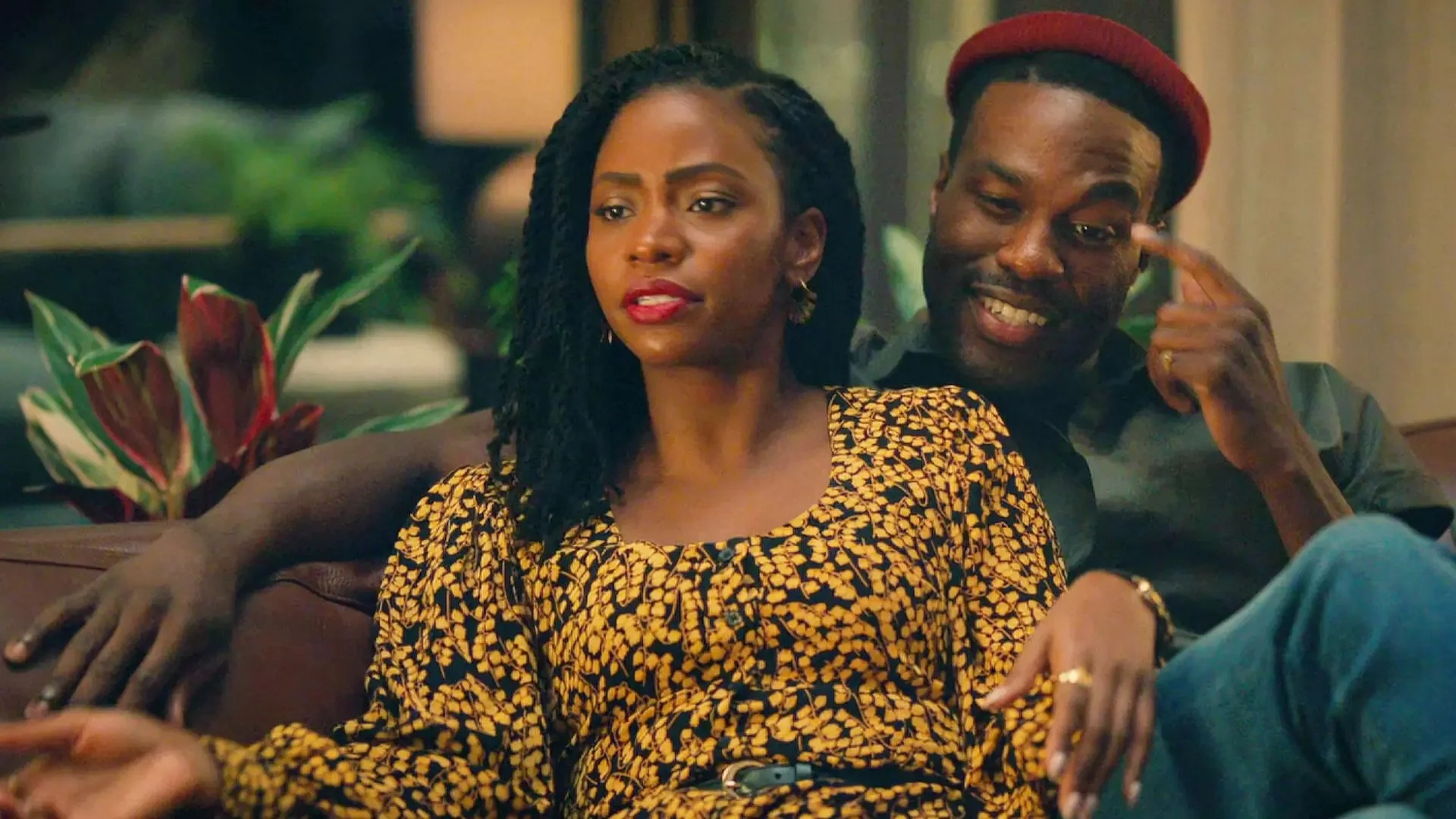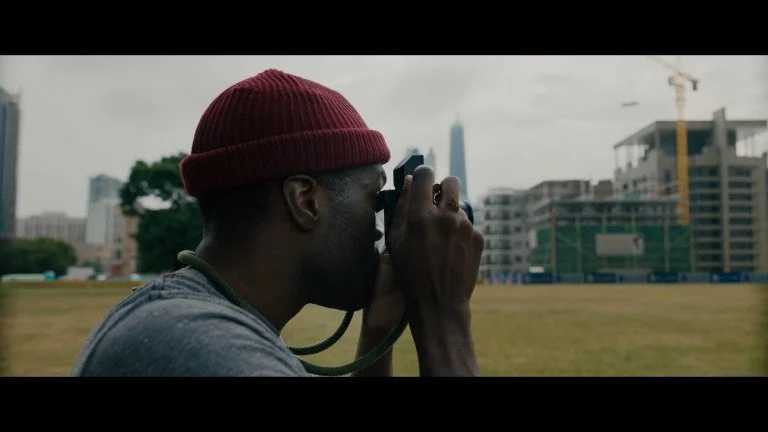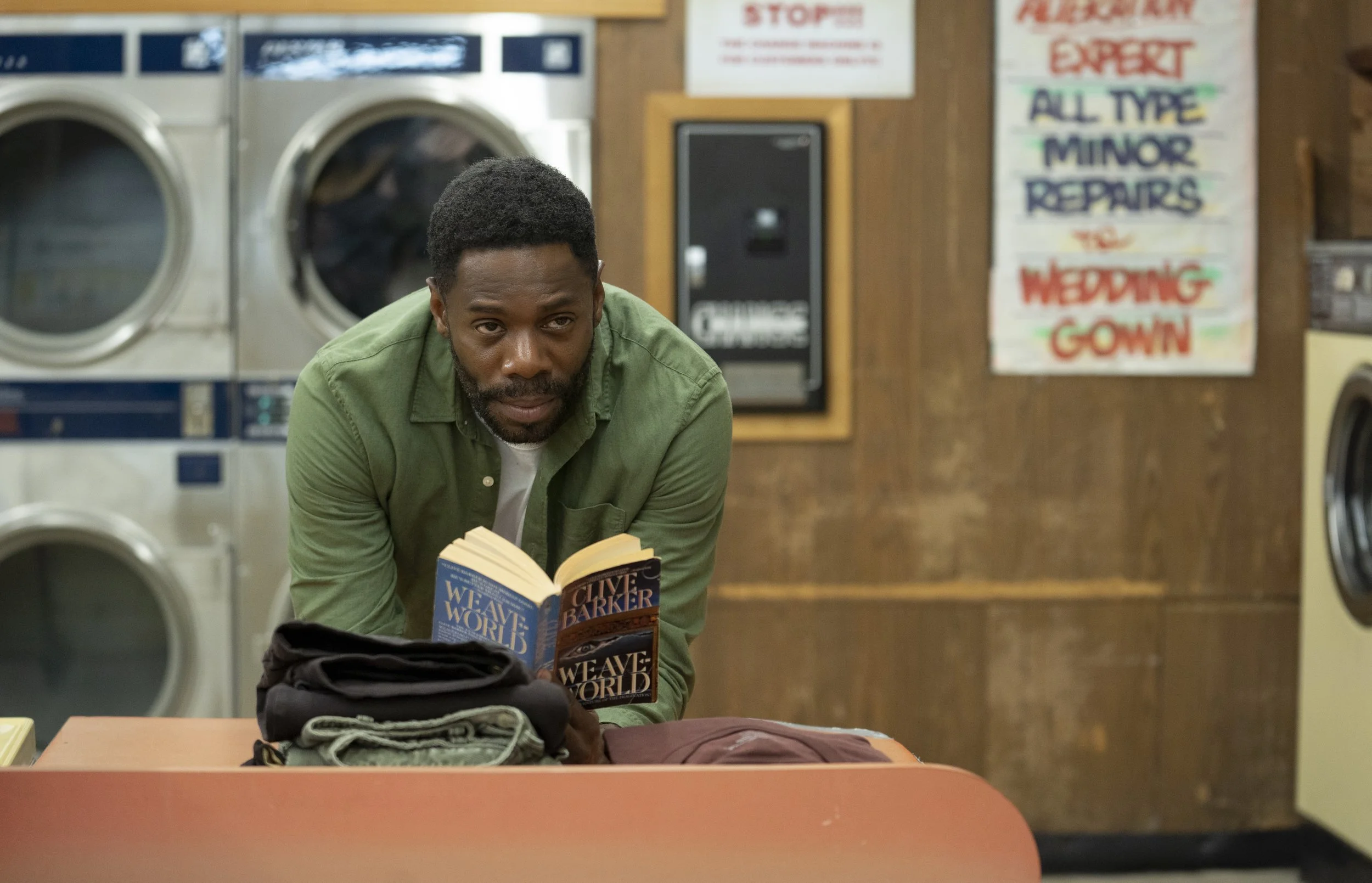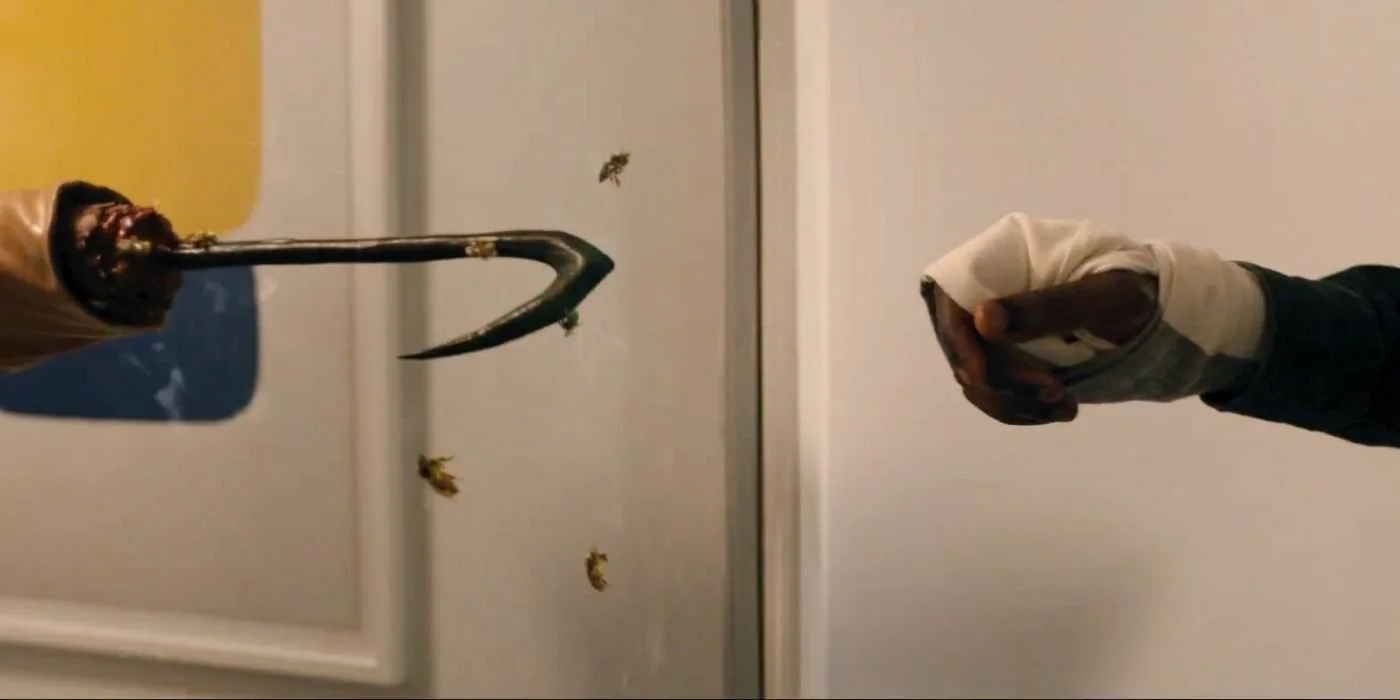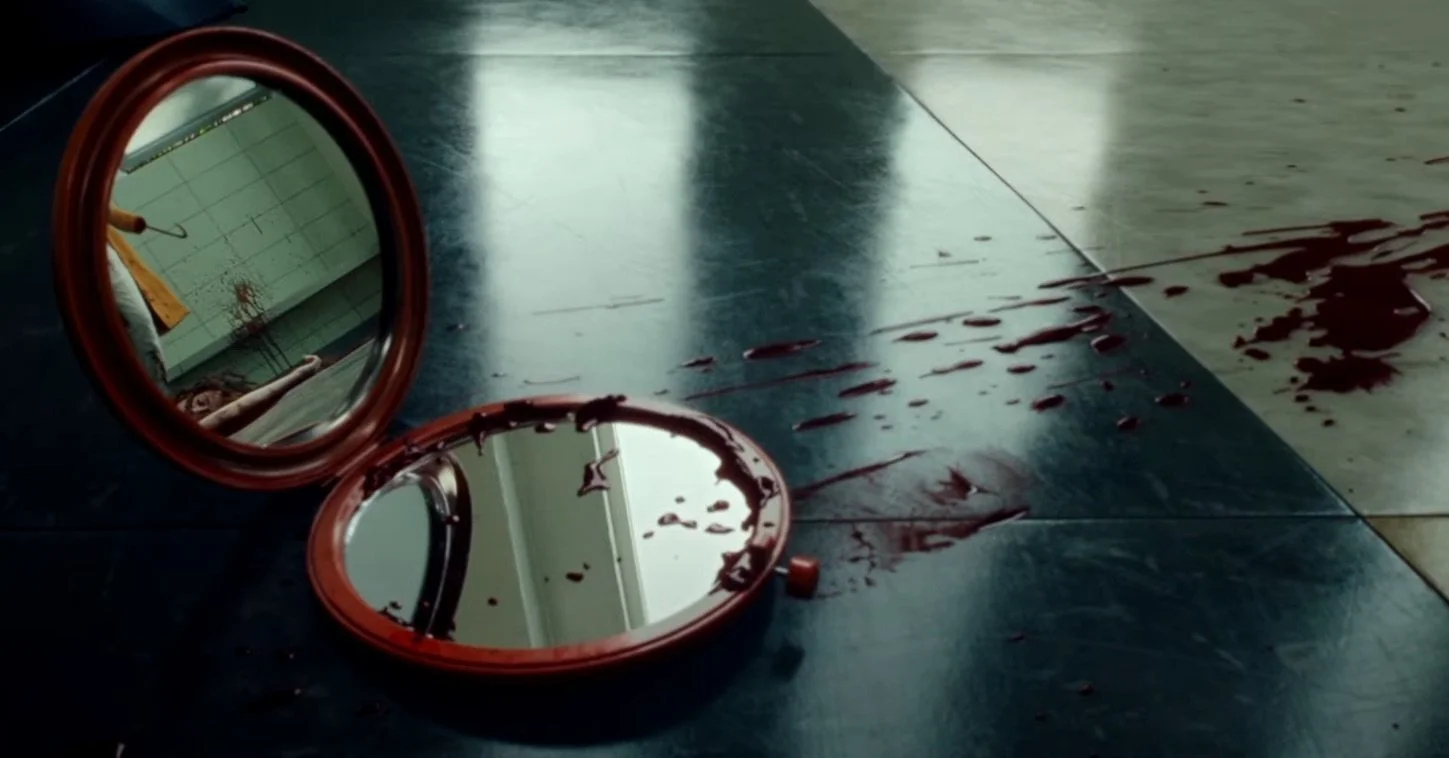Tell Everyone: Candyman (2021)
Women’s History Month Series—four films, four killer directors
Original film poster
“I am the writing on the walls. I am the sweet smell of blood on the street. The buzz that echoes in the alleyways. They will say I shed innocent blood. You are far from innocent, but they will say you were. That's all that matters.”
-Candyman
Our third featured horror film in this month’s women director series is 2021’s Candyman, a sequel and expansion of the original 1992 film of the same title. Directed and co-written by Nia DaCosta, this film builds on the original legend of the Candyman while taking us to present-day Chicago. There is a lot to unpack here, so let’s get to it.
Cabrini-Green
Before we dive into the story, I think it is important to briefly touch on the setting and its history. Candyman is set primarily in the Near Northside of Chicago where the Cabrini-Green affordable housing project once stood. Development of the project began in 1942 with two-and three-story buildings and eventually expanded to homes, row houses, and mid-to-high rise towers. It was initially celebrated in some circles as a victory for public housing but in the ensuing decades became increasingly associated with crime, neglect, and urban blight—culminating in the demolition of most of the structures in the first decade of the 21st century.
Cabrini is emblematic of institutional racism and racial profiling, broken promises, segregation, police brutality, and gentrification. I imagine its troubled history continues to be studied by scholars of urban planning policy, political science, sociology, and anthropology, for it has much to say on the pervasive impact of codified discrimination, among many other things.
Aside from a complex of abandoned and boarded-up row houses, the area now encompasses mixed housing largely occupied by new, affluent, and often White tenants, glittering offices, and upscale restaurants. You can read more about the history of Cabrini-Green in the supplements. And now, on with our story.
The Legend
Painter Anthony McCoy (Yahya Abdul-Mateen) lives with his art curator girlfriend Briana Cartwright (Teyona Parris) in a modern luxury loft apartment complex on the grounds where the Cabrini-Green housing projects once stood. One evening, the couple are hosting Briana’s brother Troy (Nathan Stewart Jarret) and his boyfriend Grady (Kyle Kaminsky) in their sleek and swanky two-level apartment with floor-to-ceiling windows. Troy lights a candle, turns down the lights, and regales the group with the bizarre and macabre story of Helen Lyle. For those familiar with the 1992 film, you might remember that Helen, played by Virginia Madsen, was a graduate student who was doing her thesis on the urban legends around Cabrini-Green 20 years earlier.
Her research brought her to Cabrini on several occasions to interview community members and take notes and photographs. According to Troy, at some point she is reputed to have suffered some kind of psychotic break wherein she beheaded a dog, kidnapped an infant, then set off on a bloody, murderous, and ultimately suicidal rampage. Fans of the first film know that there is a lot more to that story, and while I don’t want to drop any spoilers here for folks who want to go back and watch the original I can say that Helen’s story is inexorably linked to the Candyman legend.
The story intrigues Anthony, a talented artist who is struggling to find a subject for an upcoming gallery show being curated by Brianna. His curiosity sparked, he believes he has found the subject of his new project and begins digging into the history of Helen Lyle and Cabrini-Green.
Anthony even visits the university archives and gets his hands on some of Lyle’s original notes and audiotapes that she recorded as part of her research. He also visits some of the sites in and around Cabrini-Green where these strange and macabre events took place, including the original complex of row houses representing all that’s left of the Cabrini-Green project. He pokes around dilapidated, graffiti-filled homes, taking photos and trying to decipher some of what is written on the walls. It is here that he meets William Burke (Colman Domingo), a longtime resident of Cabrini and the owner of a retro laundromat.
The two sit down in the back office of the laundromat where Burke fills in the history of Cabrini-Green and recounts stories of “The Candyman,” a mysterious and supernatural figure with a hook for a hand. It is said that if you look in the mirror and say his name five times, he will appear—and he will kill you. Helen had studied this same urban legend 20 years earlier.
Turns out Burke grew up in Cabrini in the 1970s, hearing stories of the hook-wielding killer of those that would dare summon him. For Burke, the Candyman was embodied in Sherman Fields, a man who hung around Cabrini sporting a yellow trench coat with a puffy white lapel and a hook for a hand. Sherman was known to give out candy to the neighborhood kids; though it sounds a little dubious, we’re not led to think that anything inappropriate happened between Sherman and kids. Sherman, having been falsely identified as the person who had been putting razor blades in children’s Halloween candy, is beaten to death by a group of White cops. Burke suggests that the authorities became interested only when a White girl found a razor among her loot.
William Burke
Burke spots Sherman one more time in the aftermath of the grisly murder of Burke’s sister and her friend who had repeated the Candyman’s name in a bathroom mirror. While the image of a bloodied and spectral Sherman is seared into Burke’s psyche, over time any memory of him fades and what remains is simply the Candyman.
Say my Name
Anthony channels all his creative energy into his new Candyman-inspired work, one of several exhibits featured at the summer show hosted by Briana’s hipster colleague Clive Privler (Brian King). The work, entitled “Say My Name,” is prefaced with a handout that describes the urban legend. It also directs people to a medicine cabinet mirror that when opened reveals a dark-lit room with Anthony’s paintings of hands, fists, fire, and someone being beaten. The medicine cabinet is one of several nods to the first film.
Anthony meets Finley Stephens (Rebecca Spence) a snitty art critic that puts down his installation as derivative and clichéd, while also disparaging artists themselves for their complicity in gentrification. Anthony leaves the show drunk, depressed, and having made a bit of scene in front of Clive and others.
Almost immediately after the show, members of the art world and beyond begin to be murdered violently by the Candyman, though not without an invitation. Indeed, those willing to tempt fate are cut down in grisly fashion. This string of bloody murders triggers newfound interest in Anthony’s work. Suddenly, gallery owners and critics are much more interested in Anthony McCoy and the bloody events that seem to invoke his work. Meanwhile the public imagination is stirred and the media now dubs the unknown murderer the “Say My Name Killer,” which is scrawled in blood at one of the crime scenes.
Candyman comes calling
Anthony continues painting with a relentless intensity, as if driven by an unseen force. The paintings, of which there seem to be dozens, are all faces of Black men captured in blotchy browns and blacks, not clearly defined and unnerving to look at. Anthony also begins to experience seemingly random appearances of bees and glimpses of a beaten and bloodied Sherman Fields in mirrors, terrifying images that prompt him to believe that he has summoned the Candyman back from obscurity.
To make matters worse, Anthony develops a festering wound from a bee sting that causes inexplicable honeycomb-like scarring on his face and body. Briana is disturbed by Anthony’s increasingly erratic behavior, which cuts too close to home. Her father was a gifted painter who committed suicide, a disturbing event that she witnessed firsthand as a child. That thread is not pursued very far, though it is meant to shed light on why she is so dedicated to Anthony’s well-being despite his erratic state, paranoia, and frequent disconnections from reality.
While Brianna also elicits interest and morbid fascination from the art world, it seems to stem more from her connection to Anthony and the buzz surrounding him.
“The whole damn hive . . . ”
A frightened and spiraling Anthony seeks answers from Burke, who explains that Candyman is an entity that is revived periodically over the centuries after incidences of particularly brutal murders of Black people. He cites some of the individuals who were killed, only to become that generation’s Candyman. While memory of him might fade for years, an event of horrendous catalytic violence and invocation will summon him back to do his bloody work.
“Candyman ain't a He,” explains Buke who is emotionally wrought and full of righteous indignation for what Black Americans have had to endure for centuries. “Candyman's the whole damn hive.”
William shares the origins of Candyman with Anthony.
And though Candyman has manifested several forms over the years, there is the one original, the one that started it all: Daniel Robitaille, played by the late Tony Todd in the 1992 film. Robitaille was a successful painter who did portraits for mostly wealthy White families across late 19th century America.
He is commissioned to paint a young White woman and over time the two fall in love. The woman becomes pregnant and confesses this to father who, in a fit of rage, sends men to track Robitaille down. Once they catch up with him, they brutalize him, severing his hand and replacing it with a hook. They smear sticky honeycomb all over his body until bees overwhelm him with stings. And the coup de grâce? They set him on fire. This event, which occurred at the site that would eventually become Cabrini-Green, was so hateful, so odious, that it opened a pain that would last forever.
Helen Lyle’s research, and ultimately her fate, is intertwined with Robitaille/The Candyman.
Anthony, feeling himself almost being subsumed, comes to the realization that his link to the Candyman may be more than he realizes.
My two cents
We’re presented with a very powerful concept here: the Candyman as a supernatural and eternal force that takes the physical forms of victims of especially cruel and barbaric acts across generations. He, or better yet “it,” is a multigenerational entity fueled by centuries of violence, injustice, and collective trauma. This lineage ensures that the Candyman will live on in the ghost stories, urban legends, and fates of those daring to face a mirror and speak his name five times. As Burke explains, the Candyman is how we deal with the fact that these atrocities happened and are still happening.
The cast is strong all around. Yahya Abdul-Mateen tracks well as millennial artist Anthony McCoy who is languishing creatively and seeking an artistic spark. While he does not overplay the tortured artist, his obsession with the Candyman legend and surrounding history feels authentic and believable. Teyonah Parris delivers on her end as Brianna Cartwright, a curator struggling to cultivate a unique presence in the art world while trying to champion Anthony’s career, manage his instability, and deal with her own past. Nathan Stewart-Jarrett plays Briana’s brother Troy with sass and humor, serving as the film’s comedic relief but also Brianna’s protective brother. If there is a standout part, I would say it is Colman Domingo as William Burke. Domingo is truly multitasking: providing valuable exposition, filling in the lore of Candyman, and channeling the collective trauma and anguish of generations of victimized Black people. You can feel that Burke is emotionally and psychologically strained—almost near his breaking point.
The remainder of the cast play insufferable characters, mostly from the art world. From critics, to gallery owners, to curators, they are presented to us as pretentious, entitled, and smug. These aren’t exactly subtle performances, but I think that’s intentional. It was also great to see Vanessa Williams in one scene, reprising her role from the first film, playing Anthony’s mother Anne-Marie McCoy. As far as I know she is the only cast member from the original film.
The film features impressive, grotesque, and downright painful-looking practical make-up effects, along with some palatable CGI. Of course, this is a Candyman film, so it’s safe to say that several characters end up on the business end of that iconic hook, slashed and dragged in a bloody mess. Complementing the special effects department is the film’s sound design team, who clearly understood the assignment here. Sounds of flesh tearing and ripping punctuate the kills, further reinforcing the violence of the Candyman’s acts of revenge. The crescendo of buzzing, swarming bees, a trademark of the Candyman mythos, is resonant and adds to the tension in several scenes.
I want to mention one very uniquely shot scene where we watch an attack unfold from outside a high rise building with the camera moving not towards the action but slowly away from it. We’re usually brought right to the center of the kill in horror films, but Da Costa decided to subvert our expectations here while maintaining the tension and suspense.
My only complaint is that some of the Candyman stalking/kill scenes feel a bit rushed and would benefit from just a tad more tension-building. But far be it for me to gripe about brevity—this film comes in at around 90 minutes, and you know how much I appreciate a reasonable run time.
I also want to reiterate just how jarring and spooky I found Anthony’s aforementioned series of large semi-abstract portraits of Black men to be. They seem to embody ghostly amalgams of the many Black victims of racially charged violence. Check out the supplements to learn more about the talented artists whose work is featured in the film.
History, lore, and art are so important to the Candyman universe, but Da costa decides to forgo filming traditional flashback sequences. Instead, she opts for storytelling through voiceover narration layered over images of cutout puppets, which are backlit and animated to great effect. These wonderful, eye-catching visuals were created by Manual Cinema, a Chicago-based design studio and film/video production company which specializes in handmade shadow puppetry, cinematic techniques, and innovative music and sound for stage and film.
The musical score composed and performed by Robert Aiki Aubrey Lowe is cold, ominous, and hypnotic. It was created in large part through a modular synthesizer, which successfully captures the mood of the film. Lowe’s work on Candyman garnered an Oscar nomination for best original score in 2022. Fans of Phillip Glass’s score for the 1992 film should listen for its main theme, which Lowe worked into this film as a homage.
About the director
Nia Da Costa
Nia Da Costa working with Yahya Abdul-Mateen on set.
Brooklyn native Nia DaCosta is relatively new on the cinematic scene. Her breakout came with the crime drama Little Woods (2018), which she wrote and directed and for which she won the Nora Ephron Award at the Tribeca Film Festival. Candyman, however, was her big breakout in horror, a genre she has admitted to loving for as long as she has loved film.
DaCosta saw Candyman as a way to explore the vicious cycles of violence, in addition to how history repeats itself and how we collectively process trauma through stories. She also saw the film as an opportunity to expand the lore established in the first movie and bring new perspectives, particularly of those who were firsthand witnesses to the Candyman’s actions. In interviews around the film’s release she also talked about how you can look at the Candyman in several ways: as a person, a concept, a symbol, a martyr, or a monster. I would also recommend checking out this short video of DaCosta talking about how horror, which is meant to make you uncomfortable, has always been a very effective tool in exploring things that impact us on a social level and reconciling our feelings about race and/or gender.
DaCosta went on to direct the big-budgeted, high-profile superhero film, The Marvels (2023). That film was met with mixed reviews and performed well below expectations, failing to make its budget back. I have to imagine that this was due, at least in part, to the over-saturation of superhero movies from Marvel and other studios.
I was excited to read that DaCosta will direct the second installment of an upcoming 28 Years Later trilogy; these films are follow ups to the sci-fi/horror films 28 Days Later (2002) and 28 Weeks Later (2007). The first installment in the new trilogy is is set for a theatrical release on June 25, 2025. DaCosta’s 28 Years Later: The Bone Temple s slated for a January 2026 theatrical release. Considering that she’s a devout fan of the genre, DaCosta will likely return to horror cinema in the future. I think that’s a good thing!
Cast (abridged)
Yahya Abdul-Mateen – Anthony McCoy
Teyonah Parris – Brianna Cartwright
Nathan Stewart-Jarrett – Troy Cartwright
Colman Domingo – William Burke
Tony Todd – Daniel Robitaille / Candyman
Michael Hargrove – Sherman Fields
Vanessa Estelle Williams – Anne-Marie McCoy
Rebecca Spence – Finley Stephens
Cassie Kramer – Helen Lyle
Crew (abridged)
Director – Nia Da Costa
Screenplay – Nia DaCosta, Jordan Peele, Win Rosenfeld
Cinematography – John Guleserian
Music – Robert Aiki Aubrey Lowe
Production Designer - Cara Bower
Costume Design - Lizzy Cook
Producers – Jordan Peele/Monkeypaw Productions
poster art
Did you know?
In 2021 Nia DaCosta became the first Black woman to direct a film (Candyman) that debuted at the top of the domestic box office.
The original Candyman was adapted from the Clive Barker short story “The Forbidden,” an anthology series published in 1985. As a nod to the horror author, William Burke can be spotted reading the Barker novel Weaveworld.
The Candyman can never be seen directly but only through reflection.
Sci-fi/horror director Jordan Peele was a producer and co-writer on this film.
The popular Good Times TV series (1974-1979), a personal favorite of mine growing up, was set in Cabrini-Green. While the show’s intro features establishing shots of the actual Cabrini-Green, the show was filmed in Los Angeles.
Teyonah Parris, a Juilliard School graduate, teamed up with DaCosta again in The Marvels (2023). That same year, she also starred in the sci-fi/comedy They Cloned Tyrone (2023).
Candyman includes a cameo of the late and great character actor Tony Todd, who played the Candyman in the 1992 film and its two sequels. We lost Todd in the fall of 2024. We expect to do a tribute to Todd and his work in genre films in the future.
Running Time: 1h 31m
Recommendations based on Candyman
Ganja & Hess (1973)
Sugar Hill (1974)
Candyman (1992)
Supplements
70 Acres in Chicago: Cabrini Green (documentary) Go to 70acresinchicago.com to learn more about this documentary that was 20 years in the making
Meet the Artists Who Contributed to the Art of ‘Candyman’ (Variety)
How Candyman Reclaims the History of Cabrini-Green (TIME)
How a Real-Life Housing Project Inspired 'Candyman' (Collider)




